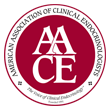
THE ENDOCRINE SOCIETY ETHICS ADVISORY COMMITTEE: Ethical Aspects of Conflicts of Interests, October 2003
7.3.2 Physicians and the pharmaceutical industry
Of particular concern to the public and to physicians are relationships of physicians with the pharmaceutical industry. Physicians and the pharmaceutical industry share common goals in that they are engaged in the treatment of disease and the conduct of research directed toward improvements in treatment. However, there are also divergent interests, as a result of the fact that the primary responsibilities of those working in industry are to their shareholders, whereas physicians act as the agents of their patients. The promotional activities of the industry attract special attention. These can take many forms, including overt advertising and the provision of gifts and perquisites to individual physicians or to their employing institutions. Arrangements between physicians and pharmaceutical companies should be open and transparent. When the possibility of a COI could be raised, regardless of the context,this should be declared openly to all relevant parties. In many cases this will require disclosure of financial or other arrangements to institutions, ethics committees, patients, potential research subjects, and others. Such disclosures of dualities do not in themselves imply the existence of COI but merely allow public scrutiny to ensure that such conflicts do not develop. The ultimate test for the effective management of COI in this setting is that benefits received from pharmaceutical companies—whether in cash or in kind, or as gifts, hospitality,or subsidies—leave physicians’ independence of judgment unimpaired and do not influence decisions they might make concerning the welfare of their patients.
Now here we are in 2018
Conclusion: Relevant nonresearch financial conflicts of interest were self-reported by 42% of
authors of clinical practice guidelines. Open Payments were recorded for 74% (84 of 113) of US authors
between 2013 and 2016. Payments to 84 US authors totaled $5.5 million for nonresearch activities and
$30.9 million for research. The nonresearch payments were divided into consulting (46%), honoraria
(26%), travel (25%), and food (3%). The Endocrine Society partially follows the National Academy of
Medicine recommendations to limit conflicts of interest. Readers should be aware of how clinical practice
guidelines are developed and the policies of the organizations and journals that publish them. Professional
societies and journal editors should strive to ensure that their policies and practices promote objective and
unbiased clinical practice guidelines. (J Clin Endocrinol Metab 103: 1–6, 2018)
An analysis of the Endocrine Society’s clinical practice guidelines (CPGs) published from 2010 to
2017—presented by Irwig et al. in the current issue of The Journal of Endocrinology and Metabolism—
suggested that the Endocrine Society met five of seven National Academy of Medicine (NAM) standards
concerning financial conflicts of interest in CPGs. As current contributors to the Endocrine Society’s CPG
efforts, we offer additional context related to the 2011 NAM standards and the current environment
concerning industry support in medicine, and we comment on the nature of industry support received by
the Society’s CPG authors according to Irwig and colleagues’ analysis of the Centers for Medicare and
Medicaid Services’ Open Payments database. Perhaps most importantly, we outline the Society’s recent
and ongoing efforts to enhance the value of its CPGs. Such efforts include a 2016 revision of CPG author
conflict of interest rules—a change that was invisible to the investigatory methods used by Irwig
et al.—in addition to other processes designed to enhance CPG objectivity. We conclude our commentary
by recognizing that good-faith attempts to enhance transparency and to reduce conflicts of
interest (real or apparent) in CPGs will ultimately serve the best interests of patients and providers; we
confirm the Endocrine Society’s resolute commitment to providing high-quality, evidence-based clinical
guidance via a CPG development process that faithfully accords with current CPG best practices. (J Clin
Endocrinol Metab 103: 1–4, 2018)
The current guidelines and standards are meant to limit or reduce treatment to numbers. There may be a variety of reasons for this. Treating the patients’ symptoms and alleviating those symptoms improves quality of life of the patient which leads to less reliance on the medical profession. Current studies and data support the treatment of symptoms. This has been the premise of medicine from its’ inception. Treat the patient, not just the disease.



